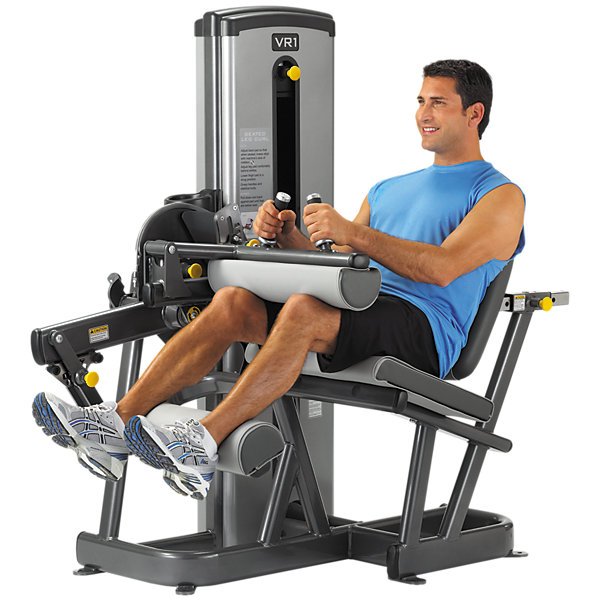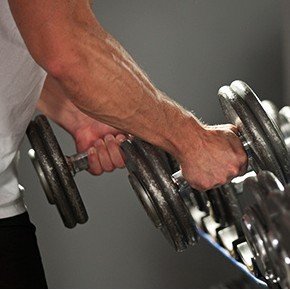May be none of us train an exercise counting every movement: breath, move the torso down, pause, fast bringing the torso up, pause again. It’s a pity. It was discovered that difference in a couple of seconds in each set could impact significantly on our body development.
The first rule: always watch your tempo
Changing the speed of contraction phase and time for rest, you can get excellent motivation for adaptation. Usual average visitor of the gym do not pay attention on his exercise tempo. He thinks only about weight. Force of gravity is everything. Such a sportsman uses inertia to lower the weight and momentum to drive the weight upwards. Should I tell you that it is so wrong?
Instead of such nonsense you should control the tempo of lifting and lowering the weight. Just movements that are under the control stimulate your body adapt to load.
So, the next tempo will be suitable for beginners: 4 seconds for the negative phase (lowering the weight) and 1 second for the positive phase (for the lighting). Simply, for example, in squats, controlled descent lasts 4 seconds, returning to the upright position – only one second.
Such a tempo prescription is denoted as “4-0-1-0”: 4 second for moving down, 0 seconds for rest in the lowest point of the range of motion, 1 second for moving up and 0 seconds for rest in highest point.
This tempo takes different effect from “1-0-1-0” which practiced at every gym all over the world. For example, squats, again. To simplify, let’s take one set of 10 reps with 60 kilo weight. If using “4-0-1-0” tempo, each set will last 50 seconds with ten 5-seconds reps. If using “1-0-1-0” tempo ceteris paribus, whole set will take only 20 seconds. Half a minute is a huge difference. During these 20 seconds many muscle fibres do not have enough time to get involved in work if you are using “1-0-1-0”.
Using tempo with more lasting eccentric phase you can achieve much more metabolic stress, but using just “4-0-1-0” give the opportunity to control movements better, gain more mass and has more impact on connective tissue condition.
Tempo prescription “1-0-1-0” means using heavier weights (of 85% of the 1RM), determines at strength indicators improvement and amplifies neurological activity due to stronger mechanical load.
The second rule: exercise speed indicates adaptation of your body to loads
Without tempo control you cannot achieve body’s adaptation to loads. It means that you will not have visible and proper progress. This statement is quite illustrated by one three-week research. During it scientists were studying bench press effect. One group used the boost tempo of doing exercises; the other had training without regard to tempo. Results were predictable: group with boost tempo increased strength indicators by 10%. The second group had no progress at all.
There was another survey which studied how the speed of reps impact on shape and body composition. The tempo prescriptions were “1-0-1-0” and “6-0-6-0” for leg curls. Results were encouraging: those sportsmen who used “6-0-6-0” increased the mass gain more than three times since 24 hours after finishing the workout. It indicates enough quantity of muscles microinjures. On the other hand, using “1-0-1-0” is successful in determine the nervous system on strength development.
The third rule: to burn the fat manipulate your exercise tempo and give the preference to anaerobic training
Using different exercise tempos is an excellent variant for fat loss. In this case oxygen consumption is increasing after finishing the workout, so as metabolic stress, that impact on our body.
Thus, couple years ago a practical studdy showed that choosing slower tempo (“4-0-1-0”) allow to burn more calories. Additionally, after finishing such a workout body consume much more oxygen than after using “1-0-1-0” tempo.
Of course this is obvious with “4-0-1-0” tempo you lost more energy because muscle is under tense more time. But we shouldn’t forget that changing tempo from time to time is also good thing, it makes body to spend more energy both during training and after it.
With all this scientists drew several definite conclusions about workout tempo:
- The most effective way to increase spending of energy is to train exercises, which activates anaerobic energy system of our body, but not aerobic. This system has so called afterburn effect when body burn even more calories during recovery period (and this period is longer than recovery period in another system);
- The simplest way to activate anaerobic system is to vary workout tempo from time to time. Change you tempo in exercises on big muscle groups: squats, rows, presses. It is optimal to use 65-85% of the 1 RM and spend from 30 seconds to 1 minute at one set.
The fourth rule: to increase muscle mass vary exercise tempo
Despite the fact that more time muscle is under the load than more fat will burn, it is found out that boosting tempo stimulates increased production of lactic acid. It is connected with increased reaction of growth hormone and use fast twitch fibres for better adaptation.
Research, that were made in 2012, showed that the accumulation of lactic acid in blood was more when testees did three sets of eight reps each using 60-70% of the 1 RM than doing this set with slow or even moderate tempo.
Boost exercise tempo suits to experienced sportsmen who want to increase their strength and increase muscle hypertrophy. In this case they involved the strongest muscle fibres. However, before using such a method you should be confident about your base, your connect tissue should be in good condition and ready to serious workload.
The fifth rule: improve strength indicators by varying exercise tempo
Maybe you know to be stronger you should work with heavy weights. “Heavy” means of 85% from 1 RM. Also it should be 6 reps per one set with such a weight using boost tempo. Such a training method develops strength much more than workout with light weights and fast tempo.
Nevertheless, hard training is not the one way to provoke the muscle adaptation; especially as regards to beginners (they have anabolic reaction on every physical load). For example, another one practical survey showed that routine to muscle failure occurred because of slow tempo and routine with moderate working weights (50-60% of the 1 RM) with 4 seconds on each eccentric phase increase strength indicators by 10% minimum. On the other slower exercise tempo is aimed at stimulating the growth of stronger muscle fibres – type II fibres.
Slow exercise tempo combined with moderate weights is the main component of workout routine that helps to recover after injuries. This method stimulates blood flow to the injured area and facilitates recovery of damaged muscle.
The sixth rule: for better results train with boost tempo
Considering all points mentioned above using the boost tempo is the best way to develop the body and achieve high results. It helps to increase power and mass simultaneously.
The year before researchers compared 4 tempo prescriptions for training to failure:
- 55% of the 1 RM – for muscle endurance using “4-1-4-1” tempo;
- 55% of the 1 RM – for speed and strength endurance using boost tempo;
- 85% of the 1 RM – for the maximum strength using boost tempo;
- 70% of the 1 RM – hypertrophy using “2-1-2-1” tempo.
Analyzing results, scientists made next conclusions:
- To achieve the maximum power you should train using boost tempo and 30-60% of the 1 RM;
- workout with weights at 85% of the 1 RM also aimed at maximum power even if testees did exercises under control and using slow tempo;
- Counting required time (30 seconds), prescription on maximum strength (85% of the 1 RM) leads to the best results. Experienced sportsmen can train with heavier weights using fast tempo, economizing the time and cutting the duration of workout.
The seventh rule: to develop muscle strength faster you should vary exercise tempo
It is not difficult to notice and understand that ideal and the one proper exercise tempo does not exist. To achieve desired results you should vary the exercises tempo constantly. It was written many times, the biggest sportsmen’s mistake is to train using one program several months or even years. It doesn’t lead to muscle gain, strength increase or whole results improvement. And this time killing is terribly boring, of course.
So, if you want to have visible result, change your training phases regularly. “Regularly” means month and a half or two months period, but not a couple of times during one week.
Firstly concentrate on accumulate phase: slower training tempo and impressive training volume. After this phase go to intensification phase. It determines on strength development. In this phase you should train using fast tempo and heavier weights.
Thanks to the new knowledge of training with tempo prescriptions, before you know it, the result will come very fast.
We wish luck in this business to all sportsmen.
If you like the article, press the “heart” icon and share this post on your wall. There will be one plus in karma from us.






sureshsoni
2015-11-26 16:59:52
Its very effective because I try this
Ярослав
2015-11-26 16:59:52
Статья очень противоречива. Единственное верно, что все должно меняться.
R
2015-11-26 16:59:52
Нужно будет прочитать.
Pavel
2015-11-26 16:59:52
Очень важная статья!
Станислав
2015-11-26 16:59:52
Отличная статья. Завтра попробую отзаниматься 1-0-4-0. посмотрим.